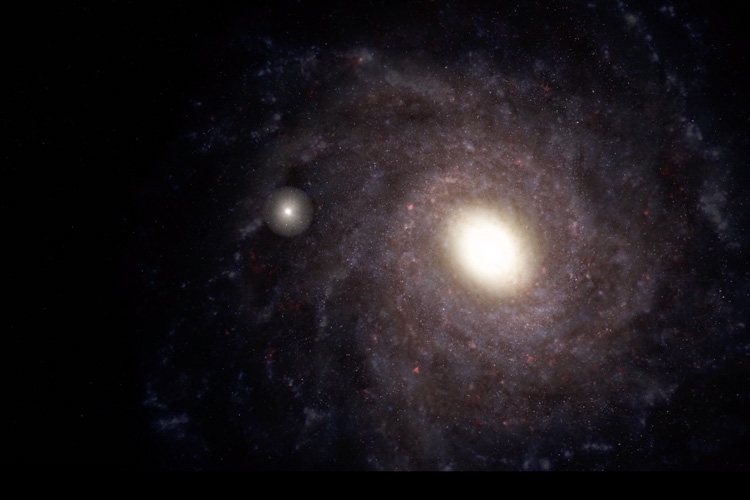Scientists said yesterday (February 22, 2021) that they’ve now created a 3D plot of more than a million pairs of binary stars, that is, double stars orbiting a common center of gravity. Astronomer Kareem El-Badry of UC Berkeley created the new plot, which wildly improves upon previous data that revealed just 200 double-star pairs. The project was made possible, of course, by the European Space Agency’s Gaia space observatory, which is engaged in a multi-year process to create a 3D map of our home galaxy, the Milky Way. In the process, Gaia has revealed many mind-boggling insights. Watch a fly-through of Gaia’s 3D plot of binary stars in the video above.
The video, created with Gaia data and animated by Jackie Faherty of the American Museum of Natural History, begins with a distant view of the Milky Way and then flies through a 6,000-light-year-diameter cloud of more than 1 million binary stars, before reaching Earth and switching to a view into the future as pairs of binary stars move through space.
El-Badry’s results were published February 9, 2021, in the peer-reviewed journal Monthly Notices of the Royal Astronomical Society.

Gaia orbits Earth and measures the sky continuously, creating a survey of the sky that astronomers reap for data. El-Badry looked for binary stars in Gaia’s 3rd data release, noting which stars move together through space and have similar distances. He also targeted pairs that are 10 astronomical units (AU) or more from each other, because stars closer than 10 AU would require additional study to determine if they are truly binaries. Gaia can provide reliable measurements out to about 3,000 light-years, thus, when looking in all directions of the sky, El-Badry was able to put together a spherical 3D map 6,000 light-years in diameter.
One of the interesting findings discovered with the new data is that binary stars tend to be paired with stars that are very similar to themselves. These identical twins share approximately the same mass. Taking into consideration that about half of all the stars similar in size to the sun are binary stars, that makes for a great number of identical twin stars floating through the galaxy. As El-Badry explained:
About half of all sun-like stars are binaries, many of them too close to distinguish, but we find something like 25% of all sun-like stars have a binary companion at separations of more than 30 AU, about the distance to Pluto … One thing we already found that is cool is that binaries like to be identical twins. That is really weird, because most of these are separated by hundreds or thousands of AU, so far apart that, by conventional star formation theories, their masses should be random. But the data tell a different story: They know something about their companions’ masses.
This finding suggests that the twin stars formed close together through a process that tended to equalize them, and then they drifted farther apart, perhaps through close encounters with other stars.
The new star map includes many binary stars with planets. Some of the systems include groupings of star-star-planet, and other systems have groupings of white dwarf-star-planet. El-Badry’s future research will focus more on white dwarfs, because their ages and masses can be estimated more precisely. This has already helped him estimate the age of a 4-billion-year-old, Jupiter-sized planet that’s part of a white dwarf-star pair.


Bottom line: A new map extending 3,000 light-years into the vicinity around Earth plots more than a million binary stars.











